We frequently hear about community forestry, but how does it really work, and what are its advantages for the populations? This month, Carmel Kifukieto, programme officer at the Centre d’Appui à la Gestion Durable des Forêts Tropicales (CAGDFT), one of the organisations we support in the Democratic Republic of Congo, tells us about the different aspects of this practice.
- What is community forestry?
Community forestry is a set of practices, techniques and methods to manage the forest and its natural resources. It is regulated by a specific legal framework that organizes local communities’ participation. This is illustrated by this sentence: «a local community can, on its request, obtain as a forest concession, a part or all of the protected forests among the forests owned under custom». Community forestry is thus making local communities or indigenous peoples responsible for managing the forest and its resources (non-timber forest products, animal biodiversity, ecotourism, lumber…). In the longer term, it is a historic restitution of property rights to local communities or indigenous peoples.
The final aim of community forestry is the reduction of poverty in rural areas. When making the most of available resources, communities can generate income to fund development projects, such as the construction of schools or health facilities. Furthermore, community forestry can enhance social cohesion through the use of a participatory approach, used when mapping forest concessions, and this way solve land conflicts between neighbouring communities.
- How do communities benefit from community forestry?
Local communities or indigenous peoples can secure their customary land by obtaining a permanent Forest Concession for Local Communities; this way, they can manage it collectively in order to guarantee their rights and to protect their means of subsistence (food, medicine, building materials…) Moreover, when using and valuing natural resources available in these spaces, communities can increase their income for a sustainable development.
- How far are we in the community forestry process in the DRC?
Since the legal framework is now complete, the process has reached the implementation phase. The law regulates the purchasing procedure for forest concessions, their exploitation and their management. Currently, requests for concessions by neighbouring communities are being assessed. The first concessions have been attributed in different provinces; we are yet to see how they will evolve in the framework of orientations established by the law (poverty reduction, sustainable management of resources).
- What is CAGDFT’s role in this process?
The Centre d’Appui à la gestion durable des forêts tropicales (CAGDFT) is a Congolese non-governmental organisation working in the environmental field. CAGDFT unceasingly works in favour of a forest management that guarantees the rights of local communities. We have a great expertise in the field of community forestry as our executive director, Théophile Gata, is one of the pioneers of this practice in the DRC.
We are one of three civil society organisations who are members of a consortium created to implement community forestry in the DRC. Our role is to build capacities of the different stakeholders supporting local communities to obtain, manage and exploit forest concessions. A multi-stakeholders concertation framework also allows achieving a consensus for any question arising, such as the use of a forest concession where land is bordering a protected area.
- What are the results of CAGDFT’s actions in the community forestry process so far?
To this day, CAGDFT organised four panel discussions with stakeholders from the civil society, technical and financial partners, donors, representatives of local communities, traditional leaders, research institutes and administrations, in order to ease dialogue and harmonise perceptions of community forestry. We also organized six information meetings for political and administrative authorities in five provinces (North Kivu, Equateur, Tshopo, Tsuapa, Mai-Ndombe and Ituri), aimed at better defining roles and responsibilities in the implementation of forestry community. Finally, CAGDFT is very proud to have supported the DRC government in equipping itself with a national strategy on community forestry, which was validated on 10th and 11th August 2017, putting behind them the differences in points of view between administration and civil society.
- How has the collaboration between CAGDFT and Well Grounded contributed to these results?
Well Grounded is a partner organisation that is very important to CAGDFT; it has been supporting us since 2016 to help us play a key role in the implementation of a national strategy on community forestry. Well Grounded supports CAGDFT for its restructuration through its institutional development policy, which helped us develop our vision, clarify our objectives and formulate an action plan. This continuously reinforces the capacities of the CAGDFT staff, so that we can continue to act effectively in favour of indigenous peoples and local communities in the DRC.
CAGDFT is one of three CSOs in the DRC (others include GASHE and RRN) working with international partners InCap, Well Grounded and Rainforest UK to implement the community forestry project in the DRC with financial support from DFID.

